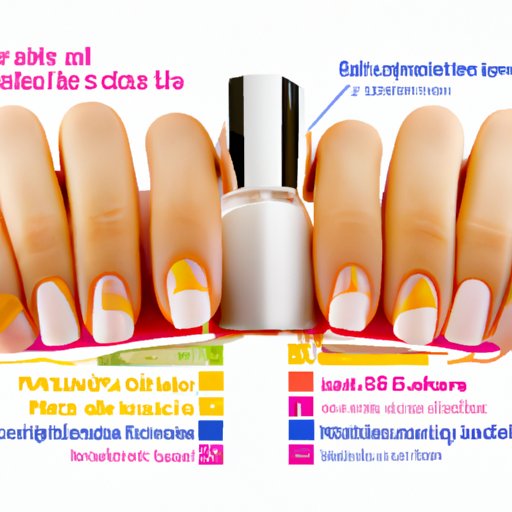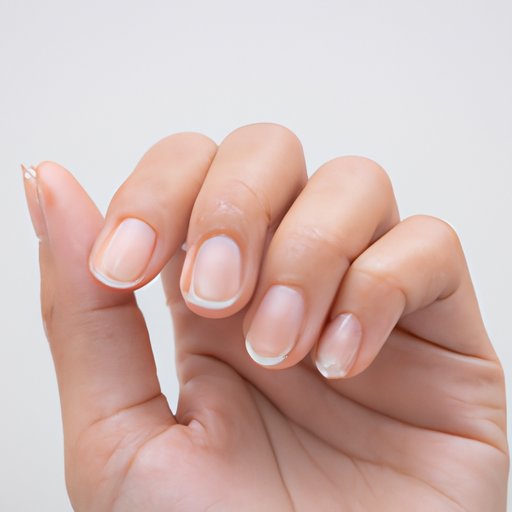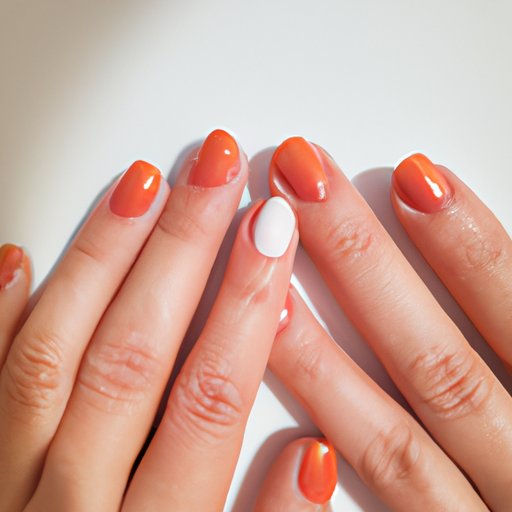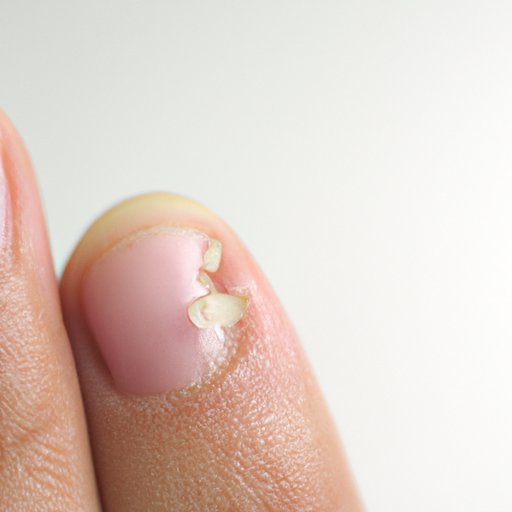Introduction
Your fingernails are often overlooked in terms of their importance to your overall health. But the truth is that your nails can reveal a lot about your physical and mental wellbeing. Changes in color, texture, or shape can be an indication of underlying health issues. In this article, we’ll explore what do my nails say about my health, so you can better understand the link between nail health and overall health.
Definition of Nail Health
Before diving into the details, let’s define what it means to have healthy nails. Generally speaking, healthy nails should be smooth, even in color, and free from any discoloration, pits, ridges, or other irregularities. Healthy nails should also be strong enough to withstand everyday wear and tear, but not so thick that they become difficult to trim. If your nails don’t meet these criteria, it could be a sign of an underlying health issue.

Overview of the Link Between Nail Health and Overall Health
The health of your nails can be a reflection of your overall health. For example, if you have a nutrient deficiency, it can lead to changes in the appearance of your nails, such as discoloration or brittleness. Similarly, certain medical conditions can cause changes in the color, texture, or shape of your nails. By paying attention to the health of your nails, you may be able to spot potential health issues before they become serious.

Common Nail Problems and What They Reveal About Your Health
Below are some of the most common nail problems and what they may reveal about your health:
Discoloration
If your nails are discolored, it could be a sign of a fungal infection, psoriasis, or even kidney disease. Discoloration can also be caused by medications, chemotherapy, or radiation therapy. Talk to your doctor if you notice any changes in the color of your nails.
Brittle or Soft Nails
Brittle or soft nails can be caused by a variety of factors, including dehydration, nutritional deficiencies, hypothyroidism, or psoriasis. Brittle nails can also be a sign of aging or a reaction to certain medications. Talk to your doctor if you notice your nails becoming brittle or soft.
Vertical Ridges
Vertical ridges on the surface of your nails are often a normal part of aging. However, they can also indicate a vitamin B12 deficiency, anemia, or psoriasis. Talk to your doctor if you notice vertical ridges appearing on your nails.
Pitting
Pitting, or indentations, on the surface of your nails can be a sign of psoriasis or alopecia. It can also be a sign of zinc deficiency, an autoimmune disorder, or a reaction to certain medications. Talk to your doctor if you notice any pitting on your nails.
White Spots
White spots on your nails are usually harmless and nothing to worry about. However, they can sometimes indicate a zinc deficiency or a fungal infection. Talk to your doctor if the spots don’t go away after a few weeks.
Thickened Nails
Thickened nails can be a sign of a fungal infection, psoriasis, or an injury to the nail bed. They can also be a sign of aging or a reaction to certain medications. Talk to your doctor if you notice your nails becoming thicker than usual.
Other Signs of Poor Nail Health
In addition to the above signs, there are other indications of poor nail health, such as splitting, crumbling, or flaking. These can be caused by anything from a vitamin deficiency to an infection. Talk to your doctor if you notice any of these signs.
How to Read Your Nails for Clues About Your Health
Now that you know the common signs of poor nail health, let’s look at how to read your nails for clues about your health. Here are some tips:
Look at Your Nail Color
Changes in the color of your nails can be a sign of a health issue. Pay attention to any discoloration, such as yellowing or darkening of the nail bed. This could be a sign of a fungal infection, psoriasis, or another condition.
Analyze Your Nail Shape
Pay attention to any changes in the shape of your nails, such as ridges, pits, or curves. These can be indicators of various health issues, such as an autoimmune disorder, anemia, or psoriasis.
Examine the Surface of Your Nails
Take a close look at the surface of your nails. Are there any signs of cracking, splitting, or flaking? These can be indicators of a vitamin deficiency, an infection, or another health issue.
A Guide to Evaluating Your Nail Health
Now that you know how to read your nails for clues about your health, let’s look at some tips for evaluating your nail health:
Check Your Diet
Nutrition plays a major role in nail health. Make sure your diet includes plenty of fruits, vegetables, and lean proteins, as well as essential vitamins and minerals. If you’re not getting enough of these nutrients, it could be impacting the health of your nails.
Take Note of Your Nail Care Habits
Pay attention to the products you use on your nails, such as nail polish and remover. Overusing these products can lead to dry, brittle nails. Also, make sure you’re regularly trimming and filing your nails to keep them in good shape.
Look for Infections
Fungal infections can cause discoloration, thickening, and brittleness of the nails. If you suspect you have a fungal infection, talk to your doctor about treatment options.

The Surprising Ways Your Nails Can Indicate Health Issues
Finally, let’s take a look at some of the surprising ways your nails can indicate health issues:
Diabetes
Changes in the appearance of your nails can be an early warning sign of diabetes. Look for signs of discoloration or thickening of the nails, which can be an indication of high blood sugar levels.
Anemia
Anemia can cause your nails to become pale or brittle. If you’re experiencing any of these symptoms, talk to your doctor about testing for anemia.
Liver Disease
Changes in the color or texture of your nails can indicate liver disease. Look for signs of yellowing or thickening of the nails, which can be an early warning sign of liver problems.
Thyroid Disorders
Thyroid disorders can cause changes in the appearance of your nails, such as splitting, ridging, or discoloration. If you’re experiencing any of these symptoms, talk to your doctor about testing for thyroid disorders.
Conclusion
To conclude, nail health is an important indicator of overall health. Changes in the color, texture, or shape of your nails can be an indication of underlying health issues. Pay attention to the health of your nails and look for any signs of discoloration, brittleness, ridging, or other irregularities. And if you’re concerned about your nail health, talk to your doctor about possible treatments or tests.
By taking care of your nails and looking out for signs of poor health, you can help ensure that your overall health is in check.
(Note: Is this article not meeting your expectations? Do you have knowledge or insights to share? Unlock new opportunities and expand your reach by joining our authors team. Click Registration to join us and share your expertise with our readers.)
